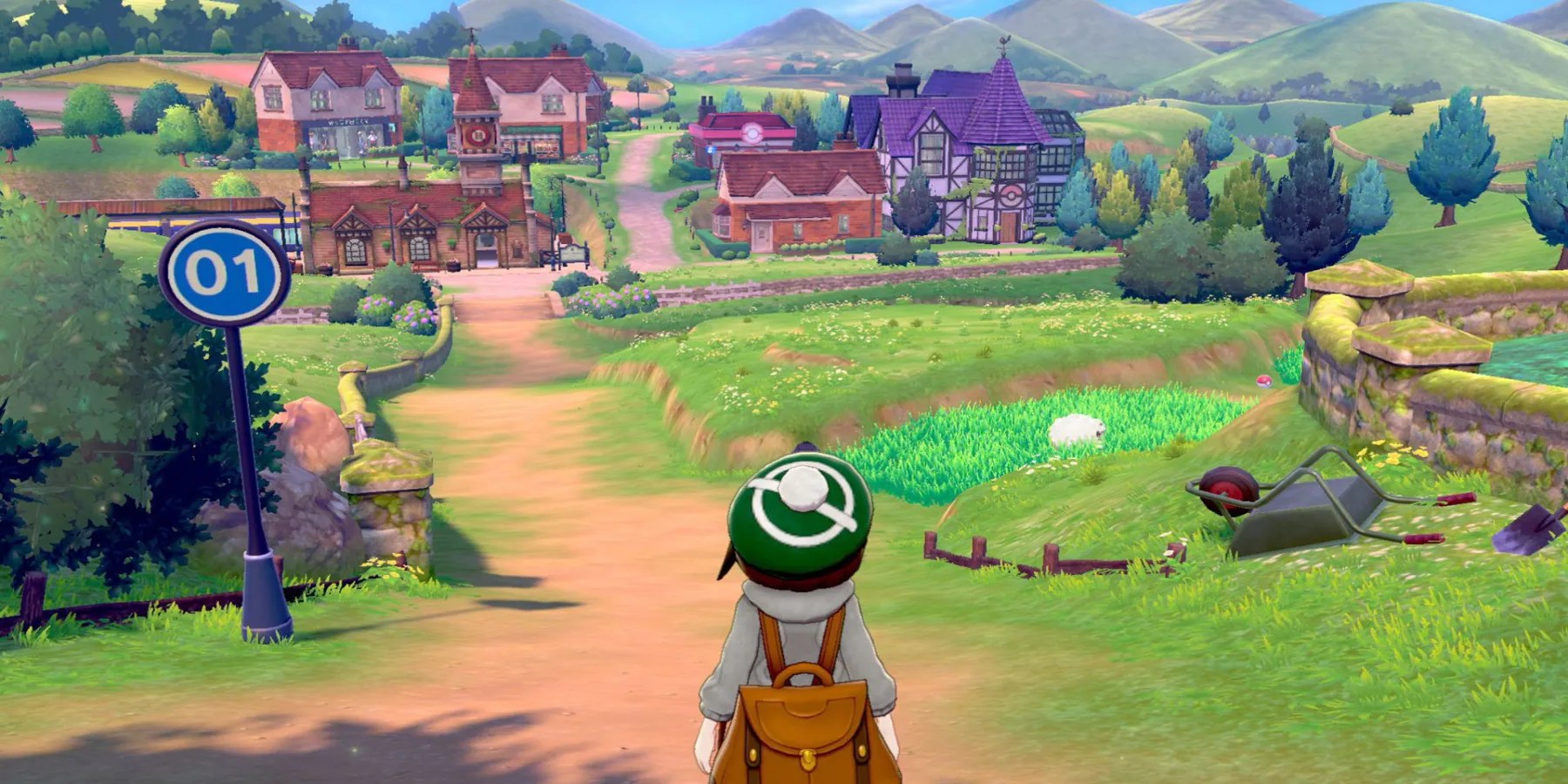ThePokemonseries is now over 25 years old, and while the main games’ formula has proven to be a success, it does not make the presence of the same format any less repetitive. The average mainlinePokemongames has the player control a young trainer leaving their small hometown with a member of astarter Pokemontrio, always consisting of a Grass, Fire, and a Water type of their choosing. The player character inevitably takes on the Pokemon League challenge, defeats all eight Gym Leaders, and eventually becomes the region’s Champion. Rivals are challenged in multiple battles, and a villainous team has plans ranging from petty theft to existential terror.
This formula is deeply intertwined with the franchise’s identity. New members of staples like Gym Leaders and villainous teams are routinely judged and compared to their predecessors. When the series does do something slightly different, likeSunandMoon’s trials, fans treat these changes like an innovation. This creates a new sense of linearity, in both expectations and design philosophy. If thePokemonseries really wants to do something new without relying on spin-offs, it should finally enter the realm of open-world games.Pokemon: Legends Arceusstarted a potential trend, and the mainline games should follow suit.

RELATED:The Fastest Pokemon of All Time
The Case For An Open-World Pokemon Game
A variety of gaming genres have gained more popularity depending on the era. The 90s, especially with the second half and the 3D variants, were arguably the golden era of the platformer, and the success ofSonic the Hedgehoginspired countless developers to make their own mascot platformer. Nowadays, determining the most popular genre is tricky due to the different environment. The way games are marketed, distributed, and even developed has changed. However, some genres have stood the test of time, likely due to pioneers normalizing said genres. First-person shooters as we know them would not be a thing withoutHaloandCall of Dutymodernizing what their “ancestors” inDoom,Half-Life, andGoldeneye 007established. Likewise with battle royale games becoming more popular whenFortnitebecame successful.
The popularity of open-world games has been increasing ever sinceGrand Theft Auto 3was first released. Despite Rockstar’s dominance in the realm of sandbox games, an increasingly higher number of developers have tackled the open world genre with their premises and ideas. Nowadays, open-world games are so common that being open world feels like a mere aspect of the philosophy of a game’s design at this point, and not a genre in its own right. Even series, such asThe Legend of Zelda, that traditionally belonged to other genres (barring certain spin-offs), experimented with the open world concept with recent titles.

InZelda’s case,Breath of the Wildtook the action-adventure aspects of the other games and made them as non-linear as possible, creating a fresh experience and one of the most uniqueZeldagames at the time.Sonic the Hedgehog, a platformer classic that arguably pioneered the mascot platformer subgenre of the 90s, will put its own spin on the open-world idea withSonic Frontiers.
Pokemonis another iconic series, and being an RPG, it belongs to a different genre. Open world ideas have integrated themselves into several different branches of gaming.Pokemonfollowing the same path asSonicandZeldais not necessarily a case of following the leader, but an opportunity to cater to long-time fan demands while capitalizing on an industry trend.
RELATED:18 Games to Play If You Like Pokemon
Pokemon’s Dire Need for Change
Pokemonhas a formula that seldom allows itself to absorb new ideas beyond gimmicks and retooling battle mechanics.Pokemon SunandMoonwere the closest the mainline games got to giving players a different goal, but they still had a Pokemon League with a proper Elite Four, and Alola had its own villains in Team Skull. Making an open-world mainlinePokemongame does not guarantee any radical changes to the formula. It is perfectly reasonable to expect aPokemongame to be open world while keeping the usual Pokemon League and villainous team. However, removing the environmental linearity could also provide opportunities to spice up the formula.
An open-worldPokemongame could have the regional landmarks, routes, towns, and cities be far more developed from both a visual and writing standpoint. The typicalPokemontown has a dozen residents, making these vast worlds feel underpopulated. Due to the power of modern technology and the ideas that come with open world games, aPokemongame of such caliber could have far more NPCs to interact with.
Towns and cities could have more houses, businesses, and miscellaneous buildings. Outside of civilization, theWild AreafromSwordandShieldcould serve as inspiration for the treatment of Wild Pokemon. Casually encountering them and making the decision to confront them would not only makePokemoncloser to the typical modern RPG, but would make this hypothetical game more immersive.
The world map would not be treated as a series of levels, but as an individual world in itself. Pointless obstacles that require the use of HMs could be mostly rendered obsolete. Without the linearity, players could explore the open world region at their free will, at the risk of certain consequences, such as Gym Leaders and wild Pokemon encounters being too overwhelming due to their strength.Pokemonhas never been strictly linear. In fact, bothRedandBlue, as well asGoldandSilver, which were the first two generations, allowed players to deviate from the usual journey for a while by not having a strict battle order for the midgame Gym Leaders.
An open-world game would embrace the series’ goal of giving players an opportunity to go out on an adventure. It could usePokemon’s popularityto its advantage and make some childhood fantasies a reality. Customizing the pacing and being encouraged to interact with otherwise irrelevant characters are perks of an open world experience that could possibly change the face ofPokemonforever.
MORE:Pokemon Sword and Shield: Where to Find Kirlia